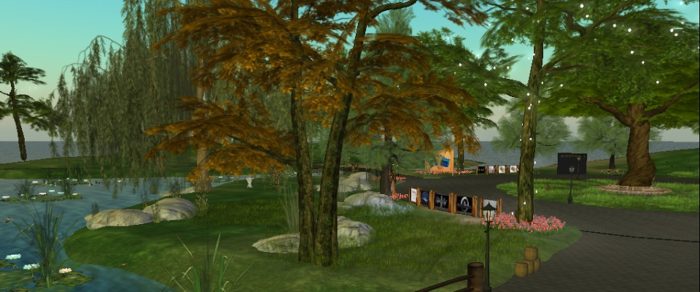
Genesis Metaverse has been attacked and some systems have been damaged, but the grid has been able to recover much of its data. To help protect against future attacks, the grid has also switched server companies, upgraded its hardware, added more backups and is taking other precautionary measure as well.
The grid also has a new login URI and hypergrid address, grid.genesismetaverse.com:8002.

According to grid owner Cliff Hopkins, the company is also looking at taking legal action against attackers but will not comment further on the issue until it has been resolved.
During the attack, the inventory database was corrupted, Hopkins told Hypergrid Business via a spokesperson.
“But we have all the OARs, and those are being loaded on brand new servers,” he said. “We’ve also changed our server company. We now have our own rack and have better systems in place.”
For example, there is now a second machine, run in parallel to the primary machine that is running the grid, that is updated every 30 seconds.
If something goes wrong, the grid can flick a switch and have the new database take over within a few minutes.
“Then we can repair the original database while the grid is still online and active,” he said. “Both blades are the same so no one will know any difference.”
The second machine also has a second hard drive with stores backups of all the regions and databases — region OAR file backups are stored twice daily and the database every 30 seconds.
These backups are also fed to the grid’s Amazon cloud server.
“So really we have three backups in place,” he said.

There are also new network security measures in place. The machines used to run the grid are now network inside the rack itself, instead of through IP addresses, so the connection is stronger, safer and faster, said Hopkins. There is also a monitoring system that alerts immediately of any unauthorized connections.
“We also have a protection bubble around the core blade,” he said. “This means anyone attempts to connect or attack it the system will go into a cocoon to protect itself but still allow the grid to function normally.”
The grid has kept users updated via its Facebook page and its Google Plus community.
“Most of our customers have stayed, as we were fully open with them every step of the way and kept them updated hourly on progress,” he said.
He added that the grid is now looking to hire a developer to work on a new Web-based dashboard.
There is currently a problem with the grid’s data pages. There are three pages that show grid statistics — a dashboard, the splash screen, and the home page.
That’s because there are two different dashboards working in the background, said Hopkins, and the home page is pulling data from the old login. “I’m currently in the process of figuring that all out.”
The correct data is on the splash screen, he said.
However, that screen only shows the number of named regions, not the grid’s total land area, since there are a lot of variable-sized regions on the grid.
Final advice for other grids? “Make backups, make backups, make backups,” he said.
- Analysts predict drop in headset sales this year - March 25, 2025
- OSgrid enters immediate long-term maintenance - March 5, 2025
- OSgrid wiping its database on March 21: You have five weeks to save your stuff - February 15, 2025
